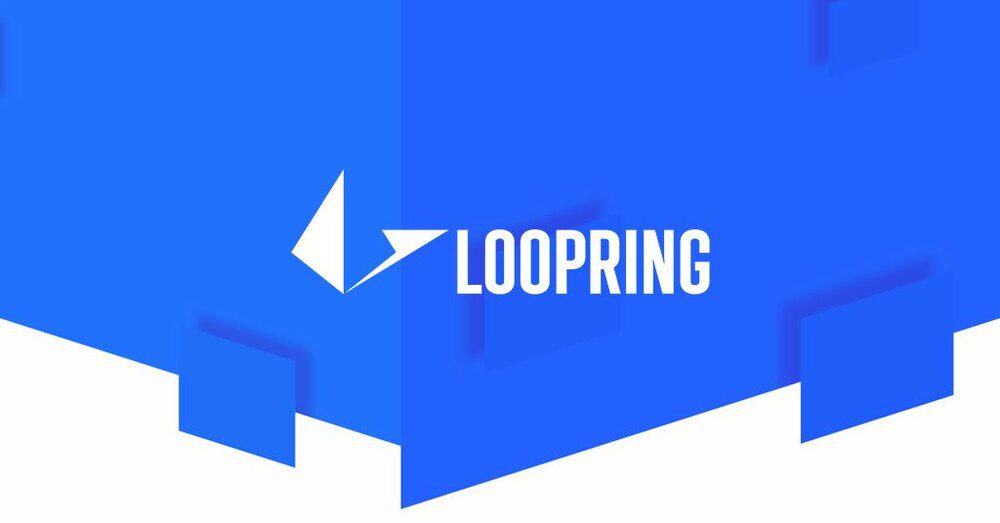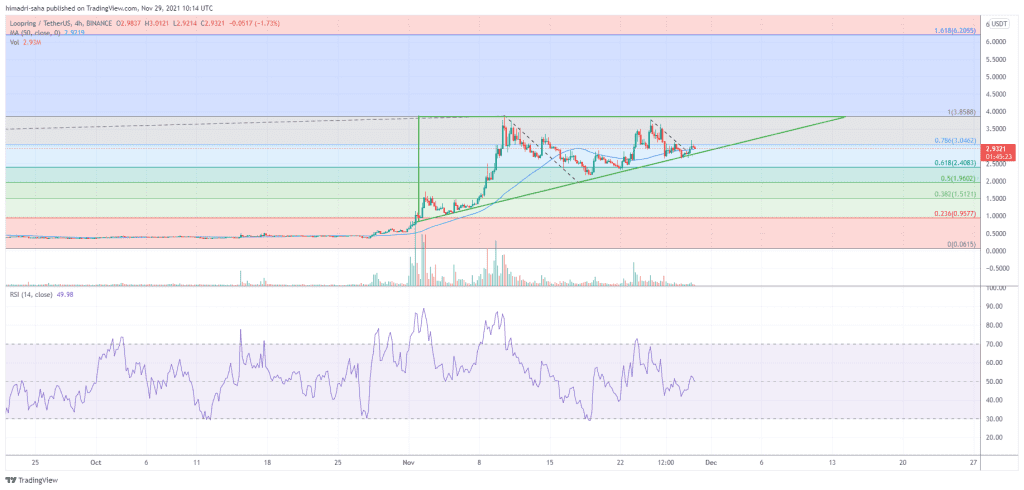
Key Loopring And EIP-4488 Takeaways
- Ethereum creator Vitalik Buterin has proposed ‘EIP-4488’ to reduce rising gas prices on Layer 2 networks.
- The proposal reflected his strong advocacy for Layer 2 rollups as the most trustless scaling solutions for Ethereum.
- Ethereum Layer 2 solution Loopring’s native token LRC pumped 17% in response to the returning bullish sentiment around Layer 2 protocols.
JAIPUR (CoinChapter.com) – Loopring (LRC), an open protocol for building high-performance, order book decentralized exchanges on Ethereum, rallied Monday as markets’ focus turned to Ethereum’s co-founder Vitalik Buterin’s proposal to reduce transaction costs on rollup-based Ethereum layer 2 networks via EIP-4488.
Related: Loopring's LRC pumps 26% amid rising Ethereum L2 adoption
In detail, the LRC price rallied over 17% on a 24-hour adjusted timeframe, stepping away from its 30%-plus price correction that occurred from the local high of $3.80.
EIP-4488
Decreasing Transaction Calldata
Transactions costs on Ethereum and associated layer 2 rollup networks have spiked through the roof. Optimism and Arbitrum facilitate 3-8 times cheaper transactions than the base Ethereum network, while zk-Rollups reduce transfer costs by 40-100x.
Nonetheless, scores of users still find the current gas fees on both rollup layer 2 networks. Philippines-based Micah Zoltu observed the same in the official Github pull request. Also, Zoltu suggested a “short-term solution” to reduce transaction prices on rollups further.
“However, data sharding will still take a considerable amount of time to finish implementing and deploying. Hence, a short-term solution to further cut costs for rollups, and to incentivize an ecosystem-wide transition to a rollup-centric Ethereum, is desired.”
noted Zoltu
EIP-4488 — the proposed solution — if activated, would considerably reduce layer 2 gas fees by decreasing transaction call data cost for Optimistic and zk-Rollups. It would also put a cap on information regarding layer 2 transactions that can be entered in a block.
But There’s A Catch
However, the upgrade would result in an increment of the average block size, which is a security concern.
“Simply decreasing the calldata gas cost from 16 to 3 would increase the maximum block size to 10M bytes. This would push the Ethereum p2p networking layer to unprecedented levels of strain and risk breaking the network; some previous live tests of ~500 kB blocks a few years ago had already taken down a few bootstrap nodes.”
But the Buterin, Dietrichs, and Zoltu trio allayed network breakdown fears of the Ethereum community by issuing a “decrease-cost-and-cap proposal.” The same would lower costs for layer 2 transactions and would not put necessary stress on the network. Additionally, the block size would have a 1.5 MB ceiling without proving to be a security roadblock.
EIP-4488 would essentially be a “backwards incompatible gas repricing” and requires a “scheduled network upgrade.” However, users would be able to continue interacting with layer 2 networks without interruptions. On the other hand, Miners would have to “stop adding new transactions into a block when the total calldata size reaches the maximum.”
But there’s a way around the rule.
“…if a block fills up to the size limit, they could repeatedly remove the last data-heavy transaction and replace it with as many data-light transactions as possible, until doing so is no longer profitable.”
Loopring Stoked Bullish Vibes
Overall, the latest Ethereum Improvement Proposal painted a bullish picture for the layer 2 rollup ecosystem. That, in turn, reignited buying and short-term investment sentiment around Loopring’s native token LRC, especially since the zk-Rollup network facilitates the cheapest transactions.
Transaction prices on rollups would significantly reduce after EIP-4488 making layer 2 rollups all the more relevant, the Loopring team said.
Related: Loopring pumps 40% as LRC demand soars amid rising Ethereum gas fees
LRC pumped 17% in response while building on the uptrend that took shape on November 1.
Although the token experienced a selloff after the upside move, bullish sentiment is still intact. As a result, traders anticipate a retest of LRC’s last all-time high. The resulting price action would form an Ascending Triangle pattern, a textbook bull setup, followed by an upward breakout towards $6.2, a 53% rally from current prices.

The relative strength index (RSI) indicator supports the said bullish bias due to neutral market conditions on the 4-hours chart.


